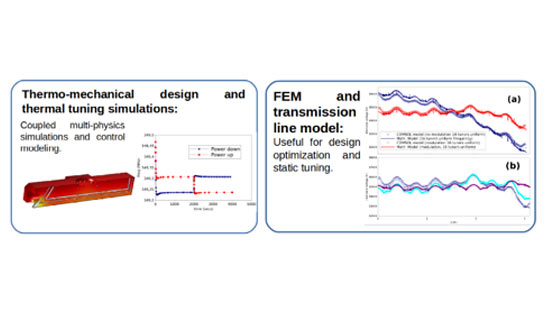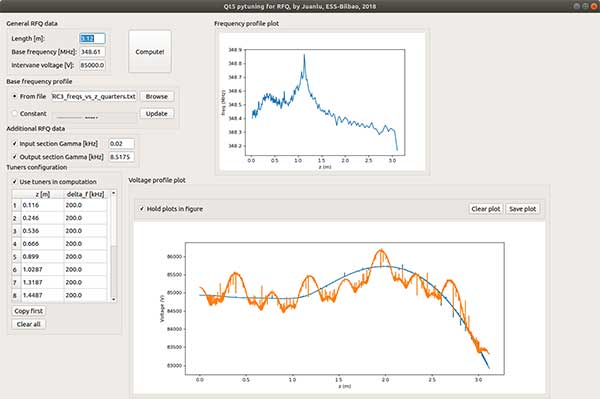RFQ
An RFQ is a linear accelerator used in proton and other ions accelerators as the first element of acceleration, typically accelerating particles from tens of keV to about 3 MeV. The RFQ fulfills three different tasks at the same time: i) accelerates the beam, ii) keeps it focused transversely, and iii) group particles longitudinally in bunches, optimizing the acceleration performance for the next RF cavities (DTL, superconducting,…). All these characteristics are obtained from the particular distribution of electric and magnetic fields when the cavity is excited with the frequency corresponding to adequate resonant mode. The cavity geometry must be designed to resonate at this particular frequency.
Physically, ESS-Bilbao RFQ is a copper cavity of about 3 meters long, built by attaching together 4 segments of about 800 mm. Each segment is itself formed by 4 elements known as vanes. This allows to achieve the high mechanical requirements needed.
First design was done in 2013, after review and major changes a new design was approved in 2015 (see TDR for details). The fabrication of the first segment started on 2016.
Modulation
The ESS-Bilbao RFQ modulation is the result of an optimization process. The modulation is designed for an intervane voltage of 85 kV, uniform throughout the entire length. Vane radius (ρ) is also constant, so to obtain a uniform local frequency and field flatness the mean aperture R 0 should also be constant. Modulation shape is based on a 2-term expansion of the intervane voltage and has been designed using a modified version of RFQSIM code.
















